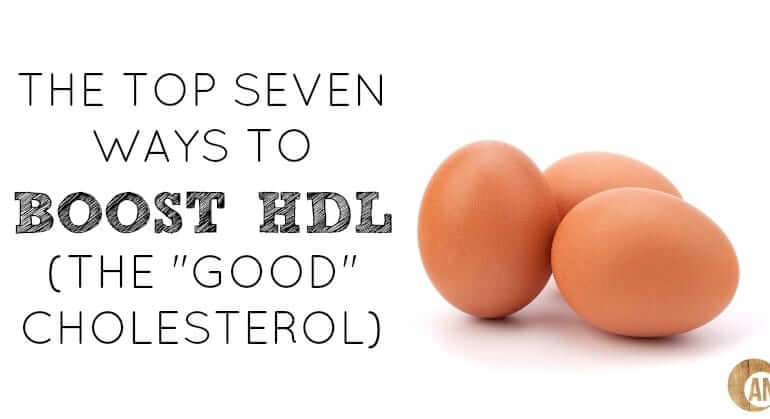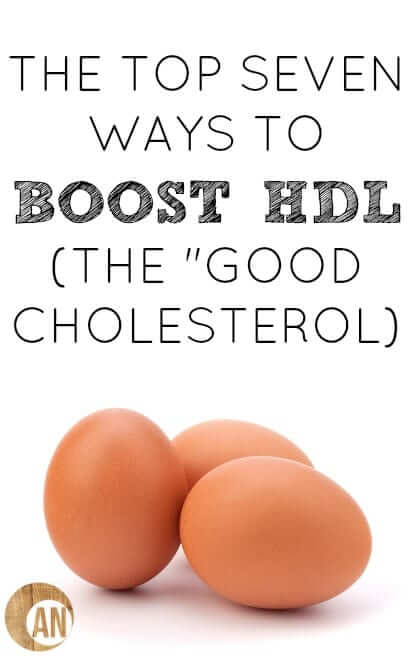
Let me get this out of the way first: cholesterol and heart disease are weakly linked. Cholesterol has been vilified, but the real villain is inflammation. Cholesterol is absolutely necessary for our health. Cholesterol is necessary for proper hormone function, cholesterol is necessary for vitamin D production, and roughly 25% of cholesterol is found in the brain, we need it for our brains to properly function. It is absolutely essential.
So in writing this article, my aim isn’t to vilify cholesterol. I want to make this very clear. Cholesterol is great. But when HDL is low and LDL particle number is high, that can be an issue. Remember that when your cholesterol is tested, you want to be tested not just for basic HDL/LDL numbers, but for particle numbers. This is a much more accurate test of your cholesterol. A low LDL particle number is good, while it’s possible to have low cholesterol and a high particle number. So instead of just testing for LDL-C (low density lipoprotein cholesterol), test for LDL-P (low density lipoprotein particle). The particle number is critical here, so make sure to base your cholesterol protocol off of that.
So to reiterate – cholesterol is not the enemy. When being tested, you want to be tested for the particle size. Boosting HDL is good, but this doesn’t mean that LDL is bad, the particle number is the issue here. One study even found that elderly patients with low cholesterol had twice the risk of death than those with higher cholesterol.
Eliminate unhealthy carbohydrates.
While most doctors will tell you to replace heart healthy saturated fats with whole grains, most doctors haven’t had much nutrition training…at all. The real culprit when it comes to heart disease is inflammation, and what do whole grains promote? Inflammation. The better option is to eliminate unhealthy carbohydrates, especially refined carbs. This includes wheat, rye, barley, buckwheat, rice, quinoa, corn, etc. The truth is that these foods naturally contain phytic acid and inhibit digestion. The phytic acid binds to minerals like magnesium, zinc, copper, iron, etc. and prevents them from being absorbed.
Overall, these grains are also not a great source for nutrient density. They pale in comparison to veggies, healthy fats and proteins. While eating properly prepared versions of them once in a while, like sprouted corn or soaked rice is completely fine, I don’t recommend allowing these inflammatory foods to make up the bulk of your diet. You’ll find yourself inflamed and possibly overweight with high blood sugar.
Replace unhealthy fats with healthy fats.
It’s upsetting to see the unhealthiest oils, the oils that absolutely lead to elevated LDL being touted as “heart healthy.” Oils like soy, canola, corn and cottonseed are often touted as a safe alternative to oils high in saturated fat. The reality is that this advice is completely backwards.
People should be avoiding industrial oils like the ones listed above. These oils have undergone extreme processing, high heat, bleaching, deodorizing, even being extracted with hexane (a neurotoxin). They are unrecognizable to our bodies. They’re also extremely high in omega-6 fatty acids and extremely low in omega-3 fatty acids, which is basically the recipe for low HDL and high LDL.
The healthiest fats are olive oil, avocado oil, grass-fed butter, extra virgin coconut oil and organic lard (yes, lard – it’s also very high in vitamin D). Popular thinking on fats is completely backwards in this country. The healthiest fats are vilified while the unhealthiest are praised. Make the switch immediately.
Eat more fatty fish and grass-fed beef.
This advice probably makes some peoples eyeballs bulge out of their faces. Beef for improved HDL? Yes. But not just any beef. It has to be grass-fed beef. Beef is an incredibly nutrient dense food, it has a favorable omega 3:6 ratio and is loaded with vitamins and minerals. Like fat, it has been wrongly vilified. Beef is rich in B vitamins, vitamin D and iron. Studies have shown that the saturated fat in beef is not correlated with cardiovascular disease.
Fatty fish are also a great option in liue of lean proteins. Fatty fish, like salmon, are high in omega-3s and low in omega-6. This is great, as omega-3 fatty acid is protective against heart disease, Alzheimer’s, cancer and diabetes. Omega-3 fatty acids are extremely beneficial to HDL. You can can check out some studies on this here and here.
Up your veggie intake.
This is really the basis of any healthy diet. Vegetables are a great source of antioxidants, vitamins and minerals. They are essential to a healthy lifestyle. While many doctors recommend upping “healthy whole grains” to improve HDL, they really should be recommending an increase of vegetales – particularly
Take a fish oil supplement.
In an ideal world, we’d all eat plenty of wild fatty fish and get an adequate amount of omega-3s and consume far fewer amounts of omega-6. This isn’t the reality. I’m a holistic nutritionist and this isn’t even my reality. Omega-6 is ubiquitous, it’s in almost everything. Our intake is high. Which is why an omega-3 fish oil supplement is so necessary. You can check out my recommend fish oil supplement here.
Reduce sugar intake.
Sugar leeches magnesium from the body, increases blood glucose levels and promotes inflammation. All of this is horrible for HDL. It’s sugar that causes heart attacks, not fat. From Dr. Hyman,
A rigorously done new study shows that those with the highest sugar intake had a four-fold increase in their risk of heart attacks compared to those with the lowest intakes. That’s 400%! Just one 20-ounce soda increases your risk of a heart attack by about 30%.
This study of more than 40,000 people, published in JAMA Internal Medicine, accounted for all other potential risk factors including total calories, overall diet quality, smoking, cholesterol, high blood pressure, obesity and alcohol.
Eat anti-inflammatory foods.
Grass-fed beef and wild salmon are two great anti-inflammatory proteins. Eggs are another. You’ve likely heard that eggs are bad for cholesterol, while the opposite is true. The truth is that the cholesterol in food contributes very little to the cholesterol found in our bodies. The liver produces majority of cholesterol. When we eat cholesterol rich foods like eggs, the liver actually produces less cholesterol. Studies have shown that egg consumption actually increases HDL and improves insulin resistance. Not to mention the fact that egg yolks are rich in omega-3s (very anti-inflammatory) as well as vitamins and minerals.
Overall, eat plenty of vegetables and healthy fats, proteins, limit whole grains and instead opt for healthy carbs like potatoes, squash, beets and carrots. Make sure you’re also eating fermented foods regularly.
Some helpful anti-inflammatory herbs are turmeric and ginger. I take both regularly.
Conclusion
Obviously, you want to live a healthy lifestyle all around. Two very important aspects I didn’t mention are sleep and exercise. Both are vital not just to healthy cholesterol levels but to health in general. Aim for at least seven hours of sleep a night and at least four workouts per week – preferably not excessive cardio. If you’re going to drink, do so responsibly and opt for red wine. Limit stress. Have fun.
It’s not that complicated – just eat well, treat your body well and have fun!

Original article and pictures take ancestral-nutrition.com site
Комментариев нет:
Отправить комментарий